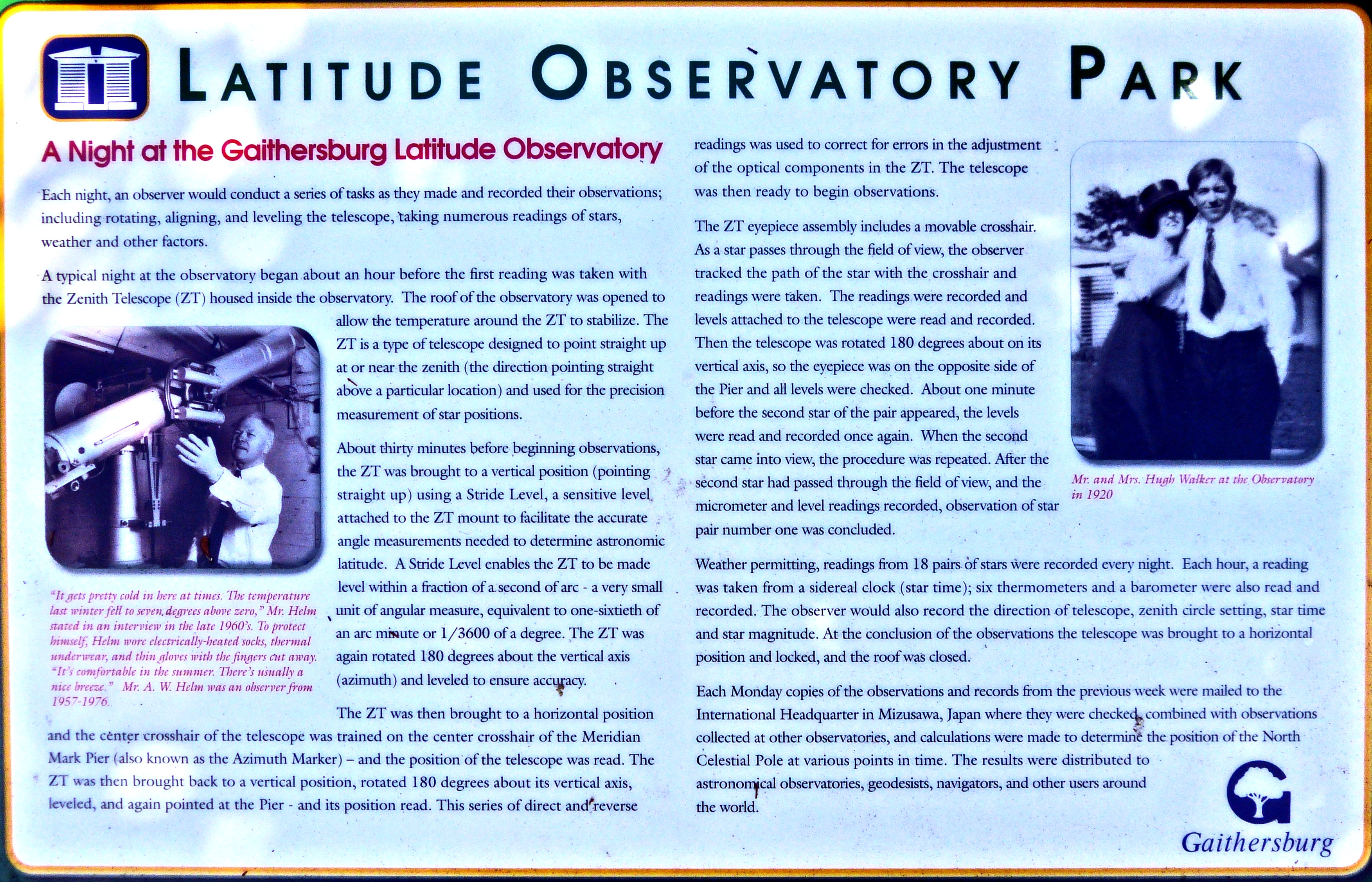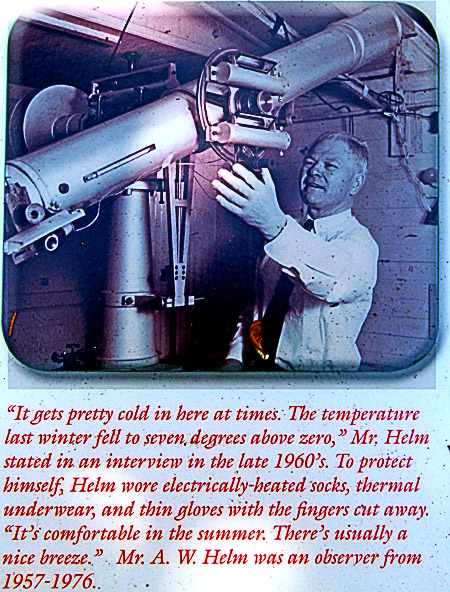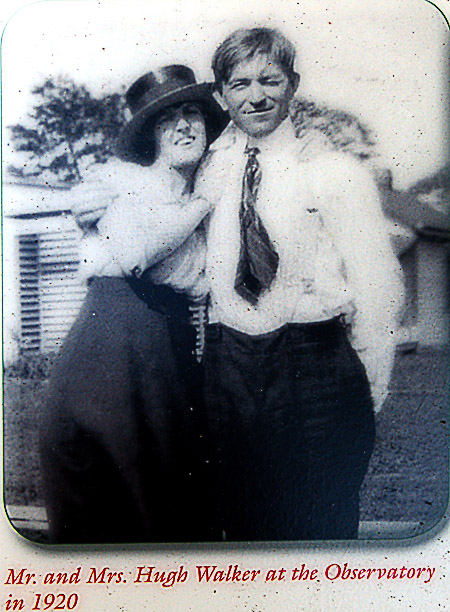 Latitude Observatory Park
Latitude Observatory Park

A Night at the Gaithersburg Latitude Observatory
Each night an observer would conduct a series of tasks as they made and recorded their obevations; including rotating, aligning, and leveling the telescope, taking numerous readings of stars, weather and other factors.
A typical night at the observator began about an hour before the first reading was taken with the Zenith Telescope (ZT) housed inside the observatory. The roof of the observatory was opened to allow the temperature around the ZT to stabilize. The ZT is a type of telescope designed to point stright up at or near the zenith (the direction pointing straight above a particular location) and used for the precision measurement ofstar positions.

About thirty minutes before beginning observations, the ZT was brought to a vertical position (pointing straight up) using a stride level, a sensitive level, attached to the ZT mount to facilitate the accurate angle measurements needed to determine astronomic latitude. A Stride Level enables the ZT to be made level within a fraction of a second of arc -- a very small unit of angular measure, equivalent to on sixtieth of an arc minute or 1/3600 of a degree. The ZT was again rotated 180 degrees about the vertical axis (azimuth) and leveled to ensure accuracy.
The ZT was then brought to a horizontal position and the center crosshair of the telescope was trained on the center of the Meridian Mark Pier(also known as the Azimuth Marker) -- and the position of the telescope was read. The ZT was then brought back to a vertical position, rotated 180 degrees about its vertical axis, leveled, and again pointed at the Pier -- and the position read. The series of direct and reverse readings was used to correct errors in the adjustment of the optical components in the ZT. The Telescope was then ready to begin observations.
The ZT eyepiece assembly includes a movable crosshair. As a star passes throught the field of view, the observer tracked the path of the star with the crosshair and readings were taken. The readings were recorded and levels attached to the telescope were read and recorded. Then the telescope was rotated 180 degrees about its vertical axis, so the eyepiece was on the opposite side of the Pier and all levels were checked. About one minute before the second star of the pair appeared, the levels were read and recorded once again. When the second star came into view, the procedure was repeated. After the second star had passed through the field of view, and micrometer and level readings recorded, observation of star pair number one was concluded.

Weather permitting, readings from 18 pairs of stars were recorded every night. Each hour, a reading was taken from a sidereal clock (star time); six thermometers and a barometer were also read and recorded. The observer would also record the direction of the telescope, zenith circle setting, star time and star magnitude. At the conclusion of the observations the telescope was brought to a horizontal position and locked, and the roof was closed.
Each Monday copies of the observations and records from the previous week were mailed to the International Headquarters in Mizusawa, Japan where they were checked, combined with observations collected from other observatories, and calculations were made to determine the position of the North Celestial Pole at various points in time. The results were distributed to astonomical observatories, geodesists, navigators, and other users around the world.
Location: N 39.13639, W 77.19910
